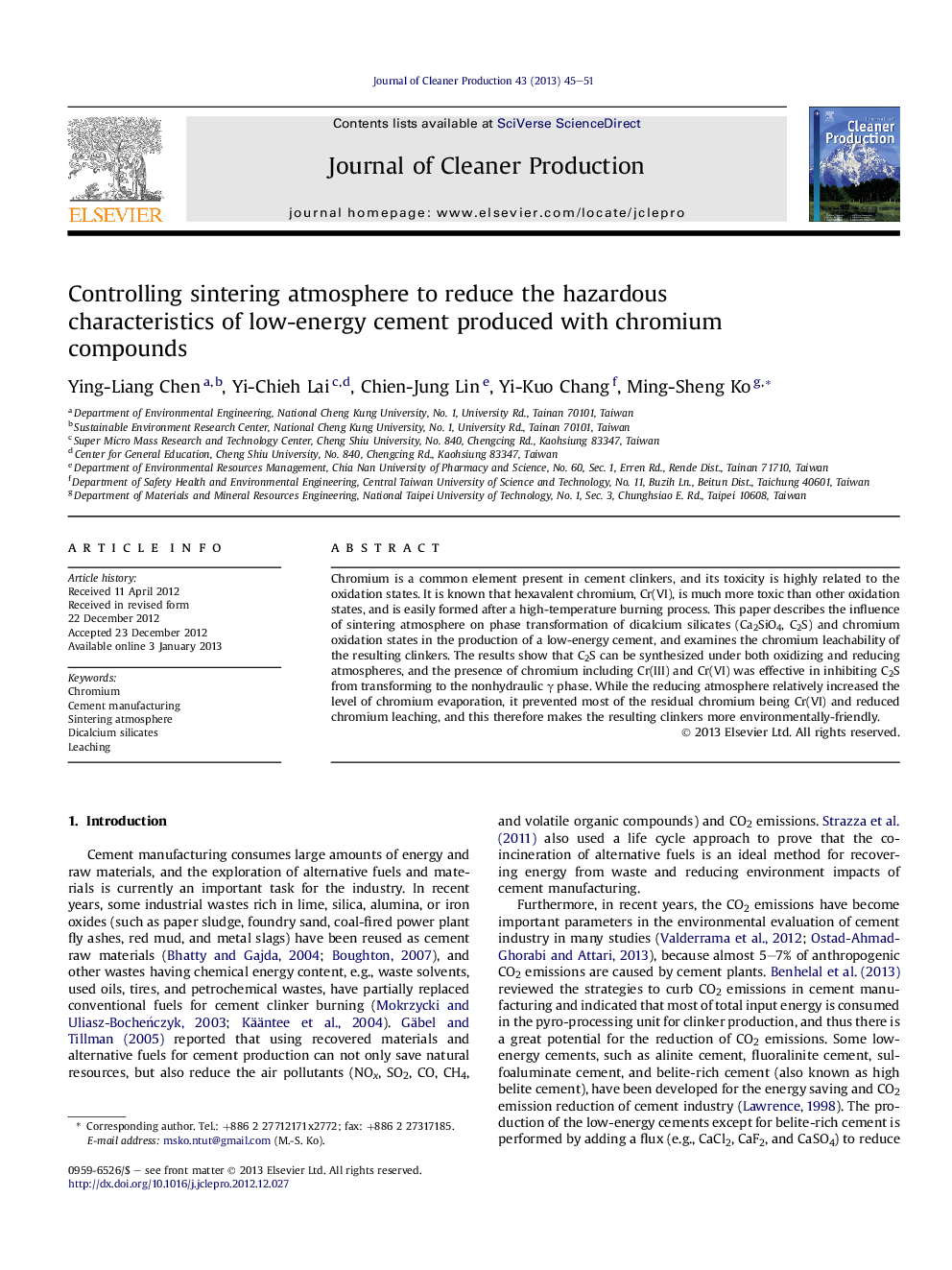| Article ID | Journal | Published Year | Pages | File Type |
|---|---|---|---|---|
| 1745444 | Journal of Cleaner Production | 2013 | 7 Pages |
Chromium is a common element present in cement clinkers, and its toxicity is highly related to the oxidation states. It is known that hexavalent chromium, Cr(VI), is much more toxic than other oxidation states, and is easily formed after a high-temperature burning process. This paper describes the influence of sintering atmosphere on phase transformation of dicalcium silicates (Ca2SiO4, C2S) and chromium oxidation states in the production of a low-energy cement, and examines the chromium leachability of the resulting clinkers. The results show that C2S can be synthesized under both oxidizing and reducing atmospheres, and the presence of chromium including Cr(III) and Cr(VI) was effective in inhibiting C2S from transforming to the nonhydraulic γ phase. While the reducing atmosphere relatively increased the level of chromium evaporation, it prevented most of the residual chromium being Cr(VI) and reduced chromium leaching, and this therefore makes the resulting clinkers more environmentally-friendly.
Graphical abstractFigure optionsDownload full-size imageDownload as PowerPoint slideHighlights► Cr(III) and Cr(VI) are both effective in stabilizing β-dicalcium silicates. ► Reducing atmosphere with carbon monoxide is useful to prevent chromium being Cr(VI). ► Evaporation of chromium under reducing atmosphere is more significant. ► Clinkers sintered under reducing atmosphere have low Cr(VI) contents. ► Reducing atmosphere significantly decreases the chromium leaching of clinkers.
